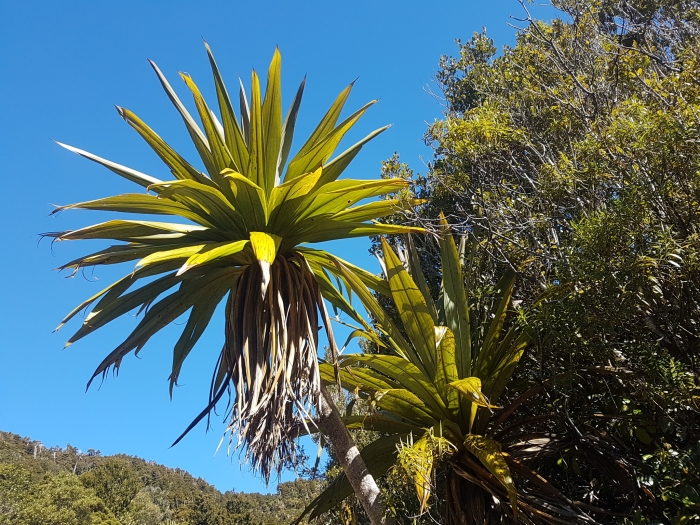Toi
(Cordyline indivisa)
Toi (Cordyline indivisa)
/
/

Emily Roberts
CC BY 4.0
Image By:
Emily Roberts
Recorded By:
Copyright:
CC BY 4.0
Copyright Notice:
Photo by: Emily Roberts | License Type: CC BY 4.0 | License URL: http://creativecommons.org/licenses/by/4.0/ | Rights Holder: Emily Roberts | Publisher: iNaturalist | Date Created: 2019-09-20T13:22:50-07:00 |
























Estimated Native Range
Summary
Dracaena indivisa, commonly known as Toi, formerly referred to as Cordyline indivisa or mountain cabbage tree, is a monocot tree native to the cool, temperate rainforests and subalpine areas of New Zealand. It is often found in moist, sheltered gullies and alongside streams. This species can grow up to 26 feet tall with a trunk diameter of 16-31 inches. The Toi has broad, blue-grey leaves that can reach several feet in length, with a conspicuous midrib often tinged red, orange, or golden. The inflorescence, which is less common in cultivation, arises from beneath the foliage and bears small, white, sweetly scented flowers.
The Toi is valued for its striking foliage and architectural form, making it a popular choice for ornamental planting in cooler climates. It is also used in container gardening and as a focal point in subtropical-themed landscapes. In cultivation, it requires cool, moist soils and benefits from semi-shade, though it can tolerate some sun if kept well-watered. It is sensitive to high temperatures and drought, which can lead to collapse. While it is not considered threatened in its native habitat, it can be challenging to grow in warmer, lowland areas due to its specific climate preferences.CC BY-SA 4.0
The Toi is valued for its striking foliage and architectural form, making it a popular choice for ornamental planting in cooler climates. It is also used in container gardening and as a focal point in subtropical-themed landscapes. In cultivation, it requires cool, moist soils and benefits from semi-shade, though it can tolerate some sun if kept well-watered. It is sensitive to high temperatures and drought, which can lead to collapse. While it is not considered threatened in its native habitat, it can be challenging to grow in warmer, lowland areas due to its specific climate preferences.CC BY-SA 4.0
Plant Description
- Plant Type: Shrub, Tree
- Height: 8-20 feet
- Width: 3-6 feet
- Growth Rate: Slow
- Flower Color: White
- Flowering Season: Spring, Summer
- Leaf Retention: Evergreen
Growth Requirements
- Sun: Full Sun, Part Shade
- Water: Medium
- Drainage: Fast, Medium
Common Uses
Border Plant, Low Maintenance, Potted Plant, Showy Flowers
Natural Habitat
Cool, temperate rainforests and subalpine areas of New Zealand
Other Names
Common Names: Blue Dracaena, Toi, Forest Cabbage Tree, Broad Leaved Cabbage Tree
Scientific Names: , Cordyline indivisa, Charlwoodia indivisa, Cordyline hectorii, Cordyline hookeri, Cordyline indivisa, Cordyline lineata, Dracaena erythrorhachis, Dracaena indivisa, Dracaenopsis indivisa
GBIF Accepted Name: